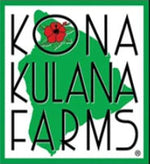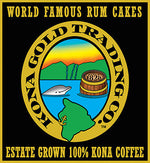Aloha and E komo mai (Welcome) to our ohana (family) at Buddha's Cup!
Join us as we embark on a journey through the captivating history of tea plants in Hawaii. In this blog article, we will explore how this beautiful archipelago became a hub for tea cultivation and the unique flavors that make Hawaiian-grown tea so special.
The Origins: Introduction of Tea to Hawaii
Tea plants found their way to the shores of Hawaii in the early 1800s when Chinese immigrants settled on the islands. These immigrants carried with them a deep appreciation for tea and a desire to cultivate their beloved beverage in their new home.

However, they faced numerous challenges in adapting tea cultivation to the unique Hawaiian environment. The unfamiliar growing conditions, pest management, and limited knowledge of tea farming in Hawaii made their early efforts quite arduous.
Despite these challenges, the Chinese immigrants' determination and resilience prevailed, and they laid the foundation for tea cultivation in Hawaii.
The first tea plants were carefully nurtured and cultivated in small gardens, marking the beginning of a journey that would eventually lead to the flourishing tea industry we know today.
Tea Cultivation in Hawaii: A Blossoming Industry

Over the years, tea cultivation in Hawaii began to take root and flourish. The fertile volcanic soil, combined with the mild and consistent climate, provided an ideal environment for tea plants to thrive. As the years went by, the tea industry in Hawaii blossomed, with passionate farmers dedicating themselves to cultivating exceptional teas.
Today, the state boasts numerous tea gardens scattered across its islands. Each garden has its own unique story, techniques, and flavor profiles. From the misty slopes of the Big Island's Mauna Kea to the verdant fields of Kauai, these tea gardens offer a glimpse into the labor of love behind every cup of Hawaiian-grown tea.
Check out all our current promotions!
The Role of Hawaii's Unique Climate and Soil in Tea Cultivation
Hawaii's unique climate and volcanic soil play a pivotal role in shaping the exquisite flavors of Hawaiian-grown tea. The volcanic soil, rich in minerals and nutrients, imparts a distinct character to the tea leaves, resulting in a smooth and nuanced taste.

Additionally, the combination of ample rainfall, abundant sunshine, and cool trade winds create the perfect conditions for tea plants to thrive, infusing each leaf with the essence of paradise.
When compared to teas from other regions, Hawaiian-grown tea stands out with its delicate sweetness and subtle floral notes. The terroir of Hawaii, combined with the expertise and dedication of local tea farmers, creates teas that are truly exceptional and worth savoring.
Savoring Hawaiian Tea Today

Today, the tea industry in Hawaii continues to flourish, with local tea producers like Buddha's Cup at the forefront. Our commitment to sustainable farming practices and artisanal craftsmanship have propelled Hawaiian tea onto the global stage.
As you sip a cup of Hawaiian-grown tea, you are not just experiencing a beverage but also immersing yourself in the history and flavors that define this tropical paradise. Each sip is a celebration of the hard work, passion, and respect for the land that goes into every tea leaf.
Mahalo nui loa (Thank you very much) for your interest in the captivating story of Hawaiian tea. A hui hou (Until we meet again) as you continue to explore the world of tea!

FAQs
1. How did tea plants first arrive in Hawaii?
Tea plants were brought to Hawaii in the early 1800s by Chinese immigrants who settled on the islands. They carried with them their knowledge and passion for tea, planting the seeds of a tea cultivation legacy in Hawaii.
2. What were the early challenges faced in tea cultivation in Hawaii?
The early tea cultivators in Hawaii encountered several challenges. They had to adapt to the unique growing conditions, which included unfamiliar soil composition and pests. Additionally, limited knowledge of tea farming in Hawaii made it difficult to overcome these obstacles initially.
3. How has the tea industry in Hawaii grown over the years?
The tea industry in Hawaii has experienced significant growth over the years. From small gardens nurtured by passionate individuals, it has expanded into thriving tea gardens across the islands. Today, Hawaiian-grown tea is renowned for its quality and distinct flavor profiles.
4. What are some popular Hawaiian-grown tea varieties and their flavor profiles?
Hawaii offers a variety of tea cultivars, each with its own unique flavor profile. Some popular Hawaiian-grown tea varieties include oolong teas like "Mauna Kea" with floral and fruity notes, black teas like "Hawaiian Sunset" with rich and robust flavors, and green teas like "Lehua" with a refreshing and grassy taste.
These teas capture the essence of the Hawaiian terroir and provide a delightful range of flavors for tea enthusiasts to enjoy.













